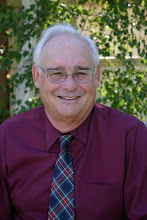
The annual conference of the American Planning Association, held last week in New Orleans, focused on the city’s recovery after flooding during Hurricane Katrina. Throughout the city were billboards advertising the new HBO series “Treme,” about people displaced by Katrina from an historic, but poor New Orleans neighborhood.
Saturating the television airways were clips of the series’ star, John Goodman, chewing out a British reporter who suggested New Orleans was past its prime and not worth saving – don’t save the city, its food or its music. Goodman ends up grabbing the guy’s microphone and heaving into the city’s rubble.
Goodman correctly shouts at the reporter that the destruction of the Mississippi Gulf Coast from Katrina five years ago was a natural disaster. The destruction of New Orleans was a manmade disaster (he actually used less polite.) Here’s a link to the YouTube video.
In their book “Clear As Mud,” Robert B. Olshanky, an urban planning professor at the University of Illinois, and Laurie A. Johnson, an urban planning consultant, document the run-up to this manmade disaster and what will be needed to put New Orleans back together. For years, government officials were warned that New Orleans’ levees were on the verge of breaking and people would drown like rats.
Goodman’s exchange with the pesty reporter was (more politely) replicated during an APA conference session. An out-of-town planner asked a similar question: Is it possible that it is just too expensive to rebuild New Orleans?
A panel of New Orleans activists and city officials, some of whom had seen their homes wash away when the water broke through defective levees, basically “ate the man’s face.”
Their point: Don’t question the money spent to restore New Orleans and return people to their homes. That question is not raised when rivers repeatedly flood Midwest cities, tornadoes tear apart neighborhoods, or when wildfires and earthquakes ravage California.
It’s going to take billions of dollars and many more years to put New Orleans and the Gulf Coast back together. Can we, as a nation, just walk away?
John Hardisty (Jack) retired in 2004 as the development services director for the city of Bakersfield, Calif. In 1952, a massive earthquake leveled most of Bakersfield’s downtown. Did anyone suggest the city wasn’t worth rebuilding?

No comments:
Post a Comment